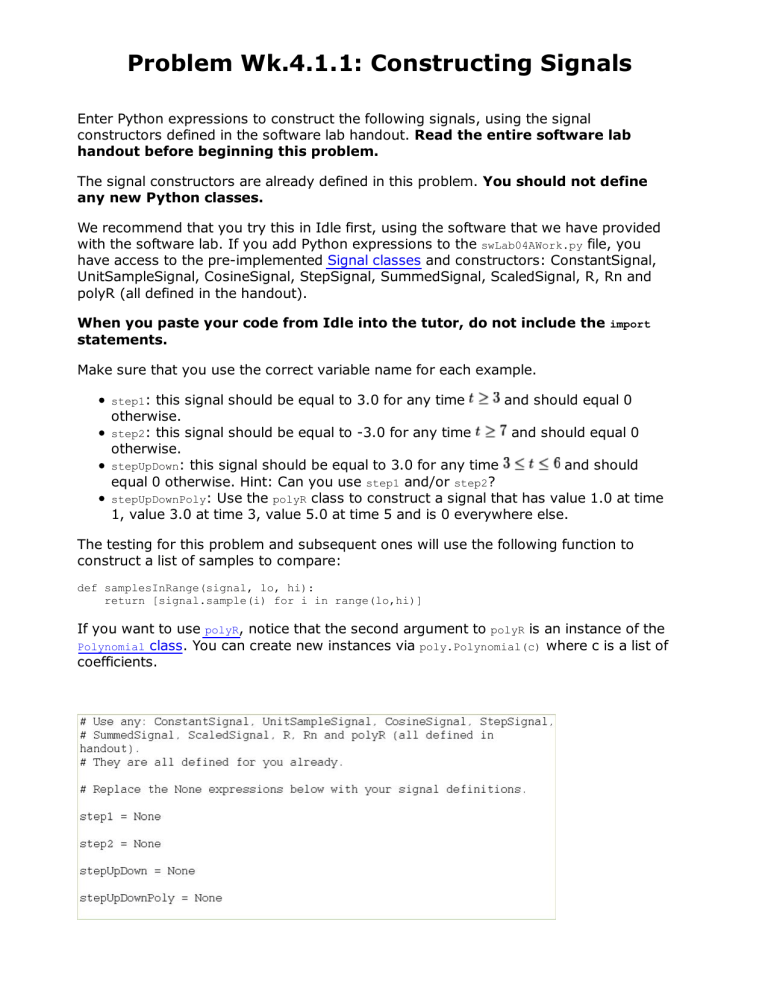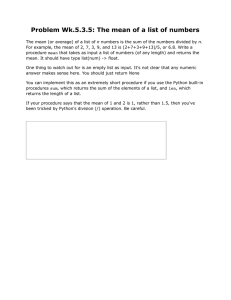Problem Wk.4.1.1: Constructing Signals

Problem Wk.4.1.1: Constructing Signals
Enter Python expressions to construct the following signals, using the signal constructors defined in the software lab handout. Read the entire software lab handout before beginning this problem.
The signal constructors are already defined in this problem. You should not define any new Python classes.
We recommend that you try this in Idle first, using the software that we have provided with the software lab. If you add Python expressions to the swLab04AWork.py
file, you have access to the pre-implemented Signal classes and constructors: ConstantSignal,
UnitSampleSignal, CosineSignal, StepSignal, SummedSignal, ScaledSignal, R, Rn and polyR (all defined in the handout).
When you paste your code from Idle into the tutor, do not include the statements. import
Make sure that you use the correct variable name for each example. step1
: this signal should be equal to 3.0 for any time otherwise. step2
: this signal should be equal to -3.0 for any time otherwise. stepUpDown
: this signal should be equal to 3.0 for any time equal 0 otherwise. Hint: Can you use step1
and/or step2
? stepUpDownPoly
: Use the polyR
and should equal 0
and should equal 0
and should
class to construct a signal that has value 1.0 at time
1, value 3.0 at time 3, value 5.0 at time 5 and is 0 everywhere else.
The testing for this problem and subsequent ones will use the following function to construct a list of samples to compare: def samplesInRange(signal, lo, hi): return [signal.sample(i) for i in range(lo,hi)]
If you want to use polyR
, notice that the second argument to polyR
is an instance of the
Polynomial
class . You can create new instances via coefficients. poly.Polynomial(c)
where c is a list of
MIT OpenCourseWare http://ocw.mit.edu
6
.01SC
Introduction to Electrical Engineering and Computer Science
Spring
20
11
For information about citing these materials or our Terms of Use, visit: http://ocw.mit.edu/terms .
